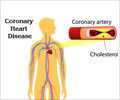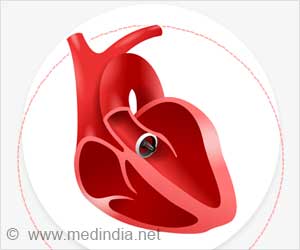A recent study indicates that there may be increased false positive alarms for coronary angiograms in emergency rooms.
Physicians caring for patients suspected of having a heart attack may trigger “false-positive” activation of the cardiac catheterization laboratory based on test results suggestive of a heart attack, according to a study in the December 19 issue of JAMA.
Allowing the emergency department physician to activate the cardiac catheterization laboratory is a key strategy to reduce the time to receiving treatment for patients with ST-segment elevation myocardial infarction (STEMI; a certain pattern on an electrocardiogram following a heart attack), according to background information in the article. “Time to reperfusion [restoration of blood flow to the heart] is a major determinant of outcome in patients presenting with an STEMI,” the authors write.Guidelines recommend that the emergency department physician make the decision regarding reperfusion therapy, such as coronary angiography, within 10 minutes of interpreting the initial diagnostic electrocardiogram (ECG), which may be challenging because clinical decisions are often made without a previous ECG result for comparison or time to observe ST-segment changes or cardiac biomarker results. A variety of other serious conditions aside from a heart attack may also cause ST-segment elevation. The researchers add that although rapid reperfusion is important, the potential clinical and financial consequences associated with “false alarms” need to be considered.
David M. Larson, M.D., of the Minneapolis Heart Institute Foundation at Abbott Northwestern Hospital, Minneapolis, and colleagues conducted a study to determine the prevalence and outcomes of “false-positive” catheterization laboratory activation for patients with a suspected STEMI. The study included a total of 1,345 patients who were enrolled from March 2003 to November 2006. The patients were part of a registry from a regional system that included transfer of patients with STEMI from 30 community and rural hospitals with pre-transfer catheterization laboratory activation for percutaneous coronary intervention (PCI; procedures such as balloon angioplasty or stent placement used to open narrowed coronary arteries) at a tertiary cardiovascular center in Minnesota.
Of the 1,335 patients with suspected STEMI who underwent angiography, 187 (14 percent) did not have a clear culprit coronary artery (the coronary artery identified as responsible for the STEMI), and 127 (9.5 percent) did not have significant coronary artery disease. Of the 14 percent of patients with no clear culprit artery, 64 (4.8 percent) had positive and 123 (9.2 percent) had negative cardiac biomarker results. Of the 1,335 patients who had angiography, cardiac biomarker results were negative in 149 (11.2 percent) patients. The rate of death at 30 days was 2.7 percent without vs. 4.6 percent with a culprit coronary artery.
“… the issue of false-positive catheterization laboratory activation remains a significant concern because unnecessary emergency coronary angiography is not without risk to the patient and may impose a burden on limited human and physical catheterization laboratory resources,” the authors write. “This critical decision process must balance the risk of a false alarm with the consequences of delaying myocardial reperfusion.”
“In the setting of increased emphasis on rapid door-to-balloon times, the consequences of false-positive catheterization laboratory activation need to be considered. False-positive catheterization laboratory activation may be another quality metric to monitor for a STEMI program.”
Advertisement
SRM /J











